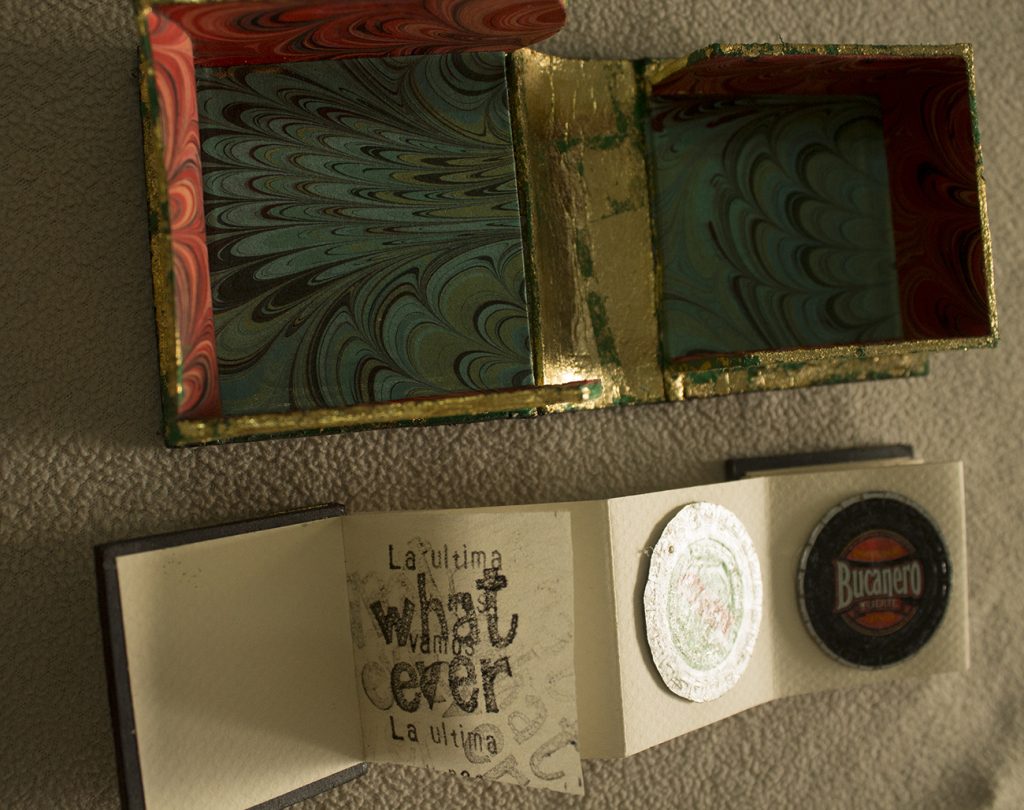
caja del libro

caja y libro abierto en la primera página

libro dentro de la caja

libro abierto

libro abierto
Julien Gil Vega
La Habana, Cuba
Si sabes como me pongo pa que me invitan
2016
Tapas de botellas de cerveza pegadas sobre papel
Unique
14 páginas
5 x 41,5cm
5 x 5 x 3,7cm
Si sabes Statement
Si sabes como me pongo pa que me invitan. If you know how bad I turn, why do you invite me? is the statement of the typical unpleasant and unbearable drunkard who becomes a total stranger in front of his friends after having drunk innumerable beers at the bar. His friends then feel ashamed of him because of his behavior after having drunk so much alcohol. This story seems to have no end, because once the drunkard gets to his limit, he decides to have another drink by saying: “This will be the last and then we leave.” This is one of the most popular “white lies” in this type of social gathering. For this character, the last means a lot more.
Artist Statement
Some years ago, when I was 27 and I left for Europe for the first time, I discovered YouTube, Internet, and all the rest. Then I started studying the different binding techniques, and began to download multiple videos and tutorials on how to bind a book. On my return to Cuba, I studied those materials and, little by little, I started learning the art of binding, getting to be more enthusiastic about this noble process day after day. Besides, I met other colleagues who were also fond of binding, and we started sharing knowledge, videos, and binding techniques.
Two years ago, I made my first art book, and after flirting with some art books, I came to the idea of what to do with all those kept useless prints. Ahaa! Eureka! I will bind them and make a big book out of them. This is how, in an incidental, non premeditated way, out of curiosity and work, Some discards and other discharges was born. Here on the island, one doesn’t always have the ideal materials to create some type of artistic work (if they do exist), and that is why –and also because of their beauty- I continued keeping all these discarded materials in order to work with them later on. For example, I did not have the necessary cardboard for the cover of the book (or a store where I could buy it), so I had to make it myself, pasting pieces and pieces of thin cardboard and methyl cellulose so as to “make” my own version of industrial cardboard. At that time, I did not have the slightest idea of the outcome or its quality, but, well, everything was satisfactory. The whole book is made with recycled material, which I recycled from my own work.

